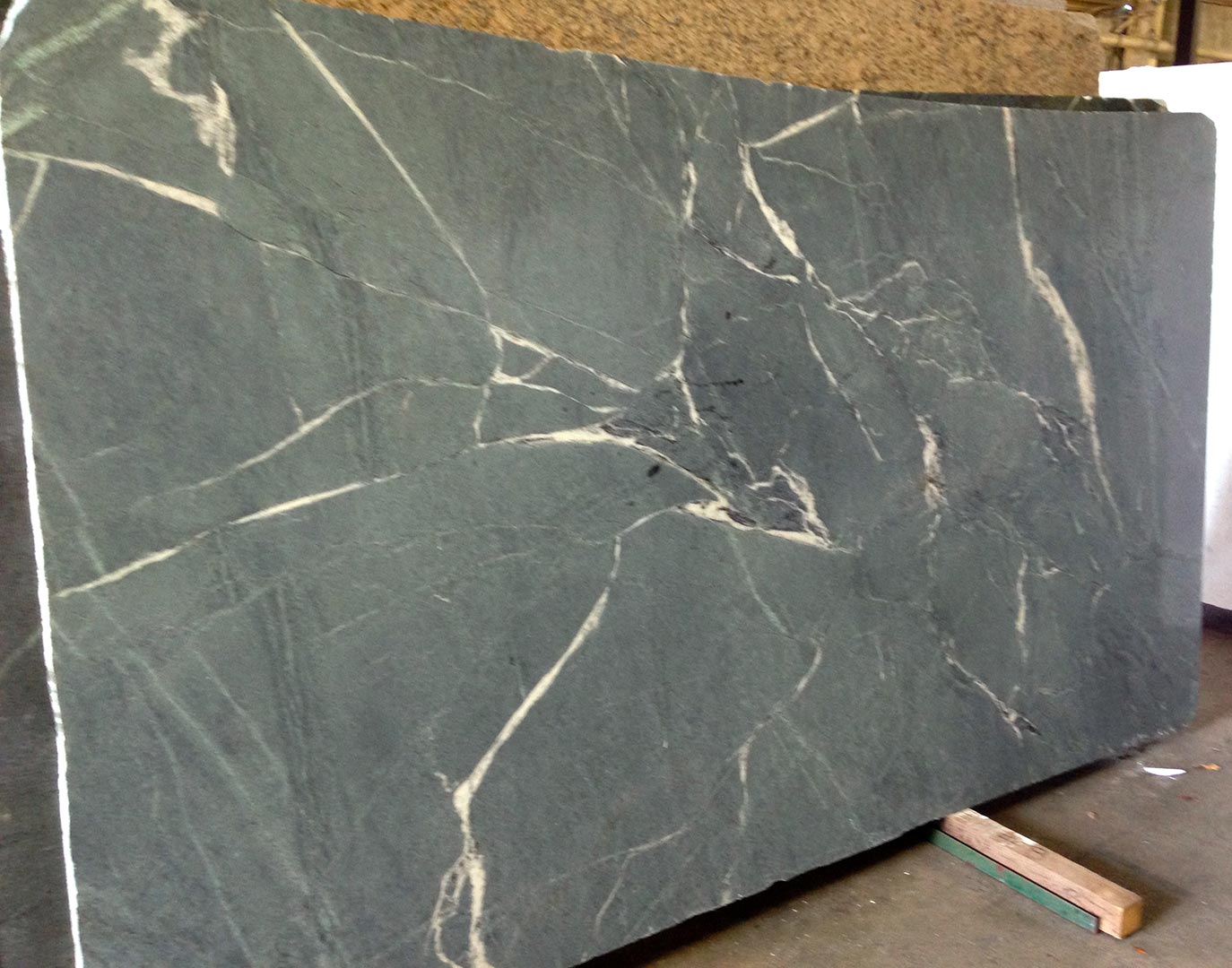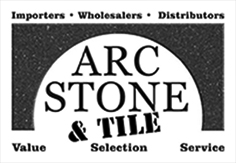Notes On Soapstone

We have been selling soapstone slabs and tiles from nearly the first day we opened our doors. We think the look and feel of soapstone is unique and offers a look and feel, that is just not duplicated with any other stone or synthetic surface currently available.
While we do not pursue Soapstone slabs and tiles the in the same manner as say, Italian Marble for example, we are fortunate enough to come across beautiful blocks/slabs from time to time. And you can find them now and again among our most beautiful slab collections.
With this in mind, we offer the following information (notes) for you to consider should you be in the market for Soapstone or are lucky enough to have this wonderful stone in your environs already:
What is Soapstone?
Soapstone is a type of metamorphic rock largely composed of the mineral talc with varying amounts of chlorite and amphiboles (crystals) and trace to minor iron-chromium oxides, and is also rich in magnesium. Soapstone is, as you can surmise, quarried from the ground in blocks, like marble and granite. But unlike either of these stones, it’s non-porous, which makes it completely stain resistant. Soapstone is an inert material and impervious to chemicals, acids and heat — so there are no household products that will harm it. It’s durable like granite and marble, but it’s more forgiving under stress, soapstone has a tendency to dent rather than chip or crack.
And finally, for you chef’s and restauranteurs out there, Soapstone is recognized by the US Food and Drug Administration (FDA) as a suitable surface material for contact with food.
How is Soapstone Used?
The special properties of soapstone make it suitable, or the material of choice, for a wide variety of uses, such as countertops, walls and floor tiles (of course). And some other uses you may not have known about:
- Cooking pots, cooking slabs, boiling stones
- Bowls and plates
- Cemetery markers
- Electrical panels
- Ornamental carvings and sculptures
- Fireplace liners and hearths
- Woodstoves
- Facing stone
- Bed warmers
- Marking pencils
- Molds for metal casting
- Cold stones
Mineral Oil and Soapstone
Soapstone fresh from the quarry is light gray in color. That rich charcoal color soapstone is known for comes when the stone is exposed to water, grease and oils. These liquids cause the stone to oxidize, which darkens the stone’s color and really brings out its natural beauty. To help expedite oxidation of the stone, we recommend that you treat it with mineral oil from time to time. This treatment will keep oxidation uniform across the entire surface.

Soapstone Countertops In Action
Soapstone is often used as an alternative natural stone countertop instead of granite or marble. It is unaffected by acids and alkalis and In kitchens it is not stained or altered by tomatoes, wine, vinegar, grape juice, and other common food items. Soapstone is also unaffected by heat. Hot pots can be placed directly on it without fear of melting, burning, or other damage.
Soapstone is a SOFT rock, and it is EASILY SCRATCHED!
However, a gentle sanding and/or treatment with mineral oil will easily remove shallow scratches. Soapstone is not suitable for use as a workbench top where it will receive rough treatment and where sharp or abrasive objects will be placed upon it (so don’t use your countertop as workbench….ok??? good, solved that problem).
Cleaning Soapstone
You can clean your soapstone after the mineral oil treatment using any household cleanser such as Ajax or Comet. Usually just wiping the soapstone with soap and water works just fine.
REFERENCE: Our friends at Vermont Soapstone have much more detailed information on caring for your soapstone and oiling, in particular on their excellent website. Find it here: http://vermontsoapstone.com/caring-for-soapstone/

Soapstone Tiles and Wall Panels
Soapstone tiles and panels are an excellent choice where heat and moisture are present. Soapstone is dense, without pores, does not stain, and repels water. Those properties make soapstone tiles and wall panels a good choice for showers, tub surrounds, and backsplashes.
Soapstone is heat resistant and does not burn. That makes it an excellent wall covering behind wood-burning stoves and ovens. Fireplaces are also lined with soapstone to create a hearth that quickly absorbs heat and radiates it long after the fire is out. This property of soapstone was recognized in Europe over 1000 years ago, and many early hearths there were lined with soapstone.

As always, if you have questions or comments or would like us to cover something specific here on our blog, please reach out to us. We love hearing form you. Send your comments to info@arcstonegranite.com
sources/references:
Geology.com
Soapstone.com
VERMONT SOAP STONE (http://vermontsoapstone.com/caring-for-soapstone/)
Wikipedia.com

